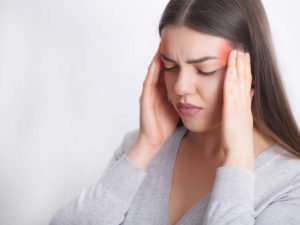Migraine & Exercise: Why Moving Isn’t Always the Cure
For many women in 2025, migraine isn’t “just a headache “it’s a complex neurological challenge. Despite the popular advice that aerobic exercise can help prevent migraines, new research reveals that for some, movement can actually trigger attacks. Understanding the link between migraine, anxiety, and physical activity is critical especially for queer India, where intersectional stressors can amplify neurological and mental health challenges.
When Exercise Becomes a Trigger
Doctors have long suggested aerobic activity to reduce migraine frequency. But recent studies, including research published in the Cephalalgia Journal in 2025, show that exercise isn’t a onesizefitsall solution.
Researchers found that women with high anxiety sensitivity the fear of bodily sensations linked to stress may experience migraine attacks during moderate or vigorous activity. For at least
one-third of migraine patients, physical exertion can act as a trigger, not a relief.
This flips conventional wisdom on its head: what works as a preventive tool for some could exacerbate symptoms for others.
Anxiety Sensitivity: The Hidden Factor
Anxiety sensitivity is more than stress it’s the tendency to fear sensations like increased heart rate, shortness of breath, or muscle tension. In migraine sufferers, this can lead to:
- Avoidance of exercise or movement.
- Heightened pain perception during attacks.
- Increased vulnerability to mental health challenges like anxiety or depression.
“For years, I tried running every morning, thinking it would help my migraines. Instead, I ended up bedridden more often,” shares Nisha, a queer professional from Mumbai.
Tailoring interventions to address anxiety sensitivity is crucial. It’s not about “pushing through the pain “it’s about creating strategies that work with your body, not against it.
Multicomponent Interventions That Work
Instead of generic aerobic routines, researchers recommend a personalized, multicomponent approach, combining:
- Gentle movement therapies (like yoga, Pilates, or tai chi).
- Mindfulness and meditation to reduce stress and anxiety sensitivity.
- Cognitivebehavioral therapy (CBT) to manage anticipatory fear and triggers.
- Sleep hygiene and dietary adjustments to reduce neurological stressors.
For queer India, these approaches can double as mental wellness tools, supporting both physical and emotional resilience in safe spaces.
Practical Takeaways
- Listen to your body: Don’t force aerobic exercise if it triggers migraines.
- Prioritize gentle movement: Yoga, stretching, and mindful walking can help without exacerbating attacks.
- Address anxiety sensitivity: Therapy and mindfulness techniques reduce physical and mental triggers.
- Track triggers: Keep a migraine journal to identify patterns linked to activity, stress, or diet.
- Inclusive support: Join Queer friendly wellness groups or online communities to share coping strategies.
Conclusion: Redefining Migraine Care
In 2025, the science is clear: exercise is not universally beneficial for migraine management. Instead, a tailored, holistic approach that considers mental health, anxiety sensitivity, and lifestyle factors is key. For women and queer individuals in India, understanding your body, finding safe spaces, and embracing mindfulness-based practices can empower you to manage migraines not just survive them. 




